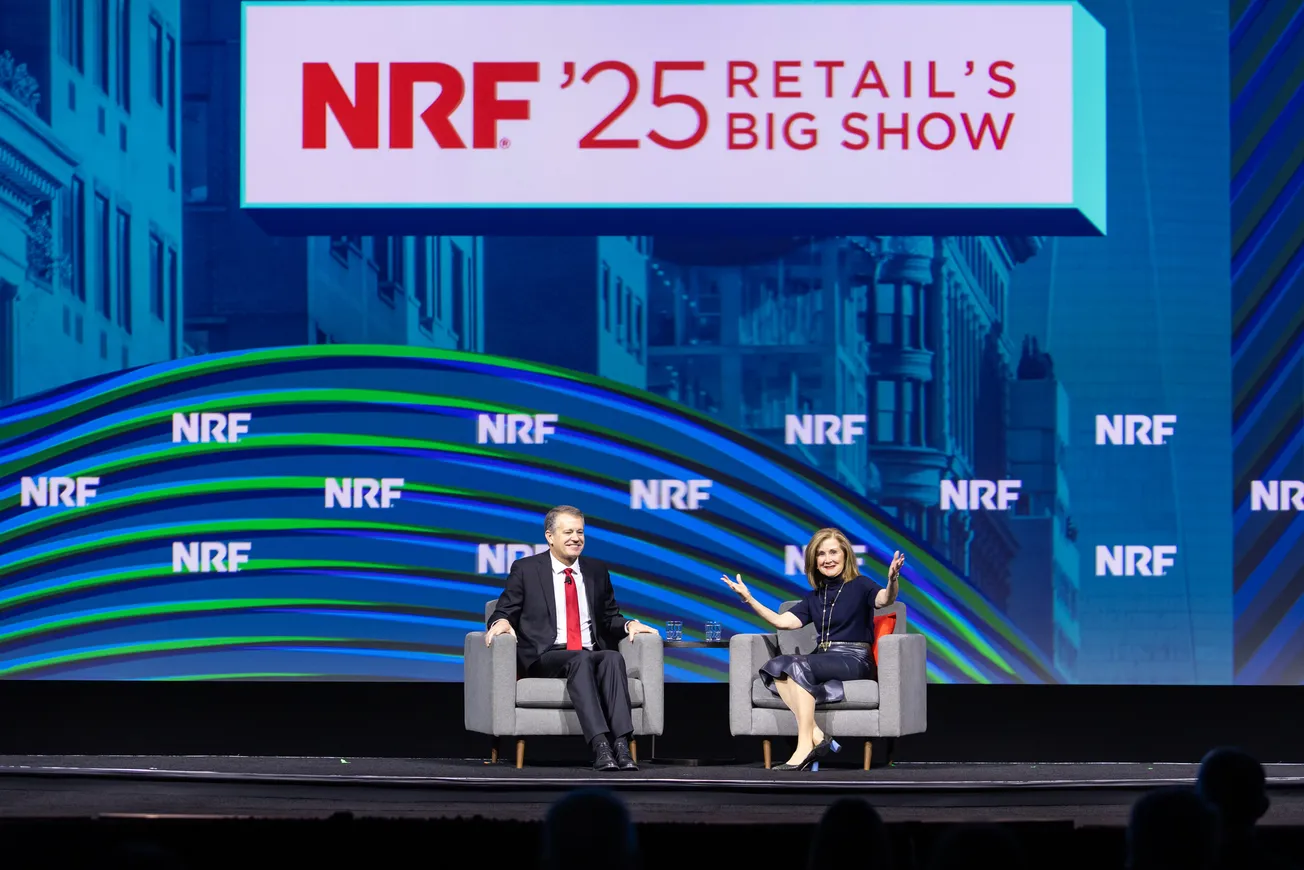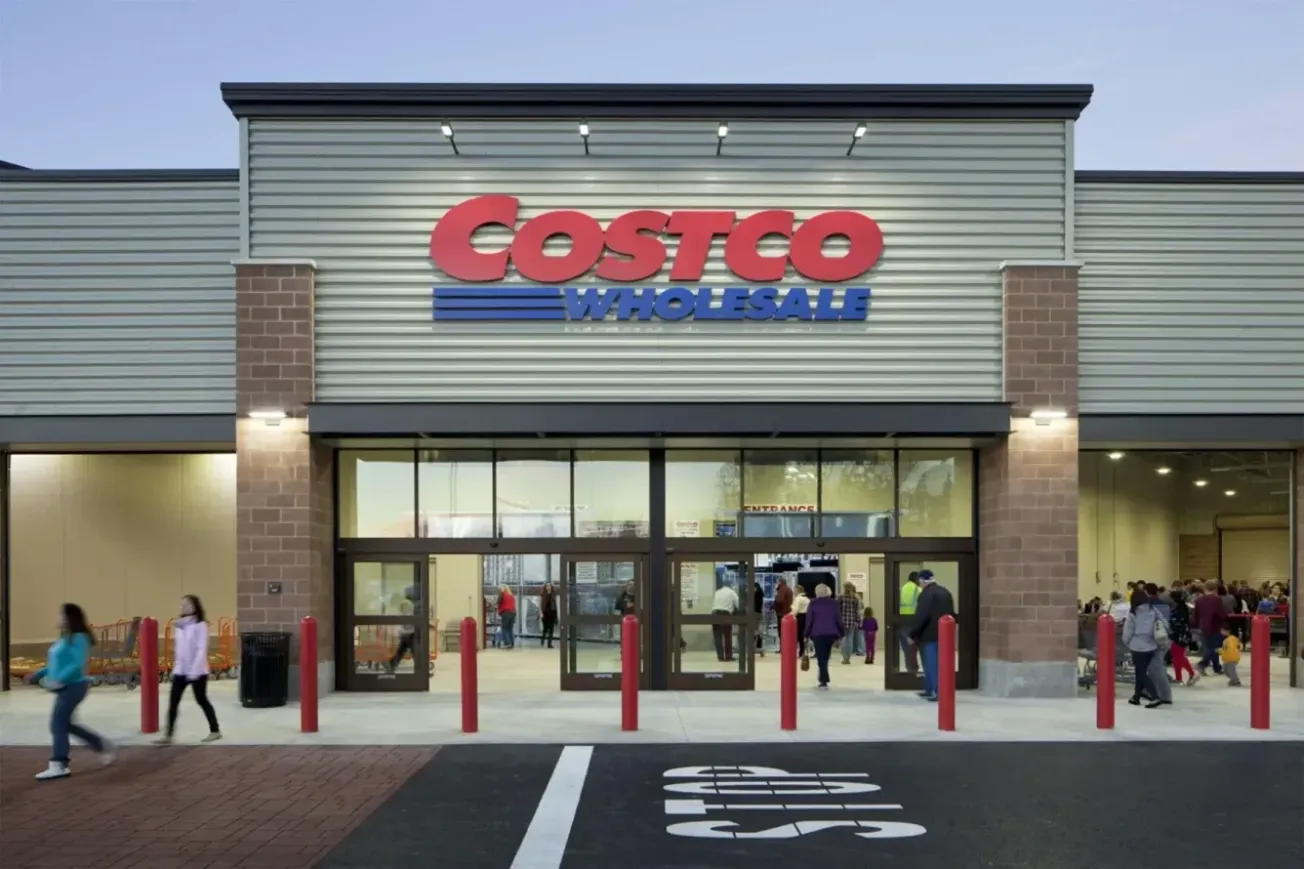NEW YORK – The transformative power of artificial intelligence once again commanded the spotlight at the National Retail Federation’s Big Show earlier this week. Unlike previous years, however, talk centered on how the technology can be used to solve specific problems – honing operations, supporting front-line workers, and enhancing customer satisfaction – rather than AI’s potential to alter the retail paradigm as a whole.
John Furner, president and CEO of Walmart U.S. and outgoing NRF chairman, devoted part of the Big Show’s opening keynote session to AI’s trajectory. Engaging in a dialogue with Azita Martin of NVIDIA, which supplies graphics processing units that play an essential role in AI computing, Furner articulated the ability of artificial intelligence to allow companies to test ideas quickly and efficiently. “You create it, you simulate, you play in it, results happen,” he said. “It enables us not to have to move things around physically or put capital investments in the ground. We have a much better chance of success.”
Martin, NIVIDIA’ vice president and general manager for the retail and CPG sectors, provided several real-world examples. L’Oreal has created three-dimensional “digital twins” of its beauty products and provided them to the advertising agencies it works with. She explained that the digital twins are then combined with such generative AI models as NVIDIA’s Picasso or Stability AI’s Stable Diffusion, enabling marketers to develop multiple campaigns faster than ever before.
“This ability to iterate more rapidly just helps their creative team become even more productive,” Martin added. “That has driven much more customer engagement on social media, on the e-commerce side, on influencer marketing, and it’s improved their conversion rate.”
Home improvement retailer Lowe’s has created a digital twin of its store base, which updates with operational and inventory data several times a day. “As a result, they’ve been able to simulate different layouts to really optimize how customers are shopping in the stores, how to change their layout, and ultimately improve their sales and revenue,” said Martin, adding that those efforts are being expanded to include individual planograms.
The final example of a company leveraging NVIDIA technology cited by Martin was Walmart. “Your team has been using our data science acceleration libraries to focus on forecasting,” she said to Furner. “It’s enabled you to basically ingest large amounts of data and be able to forecast on a weekly basis hundreds of millions of combina-tions of SKUs and stores. By forecasting and running those algorithms more frequently, your forecast accuracy’s improved.” She pointed out that for a company of Walmart size, even a modest 1% improvement in forecast accuracy yields significant business benefit.
Furner encouraged members of the audience to walk the show floor, which featured more than 1,000 exhibitors, and consider how the AI-based tools on display might be applied to their operations.
“Think about how these solutions could enable us to have a better business, which then leads to personalization, which is really hard,” he noted. “We all know people in our lives, we know our customers individually, but in many cases, you’re trying to understand, recognize and learn about millions of people at the same time. The data’s always changing, the behaviors are changing, how they engage is changing. So, the speed, the energy consumption of what we have available today is much different with every person.”
Martin indicated that generative AI has already recast e-commerce. “As we all know, when we shop, most people are using search. And now search has completely changed,” she said. “It’s become AI-enabled and it uses multiple generative AI models. It uses catalog enrichment, reasoning, and embedded text. All of that enables your e-commerce site, your mobile apps to really deliver a much more personalized experience, helping the customers find exactly what they’re looking for.
“A new solution, which I know Walmart is in the process of imple-menting, is called shopping assistant. And again, a shopping assistant is basically taking your best and most knowledgeable sales associates and replicating that 24 by seven at scale on your e-commerce side and on your mobile side. And of course, our teams are working together on both search and Wallaby, an assistant for Walmart’s sales associates, as well as shopping assistant for your consumers.”
Furner, who began his career as an hourly associate in 1993, appreciates the impact that AI will have on customer service and satisfaction. That’s particularly important for Walmart, which serves more than 230 million Americans every week.
“Understanding context is important and search is an expression of intent, which I think is the simplest way to say it,” he commented. “Understanding the intent and then remembering intent is important so that the context builds over time and every experience isn’t a reintroduction and a restart.”







